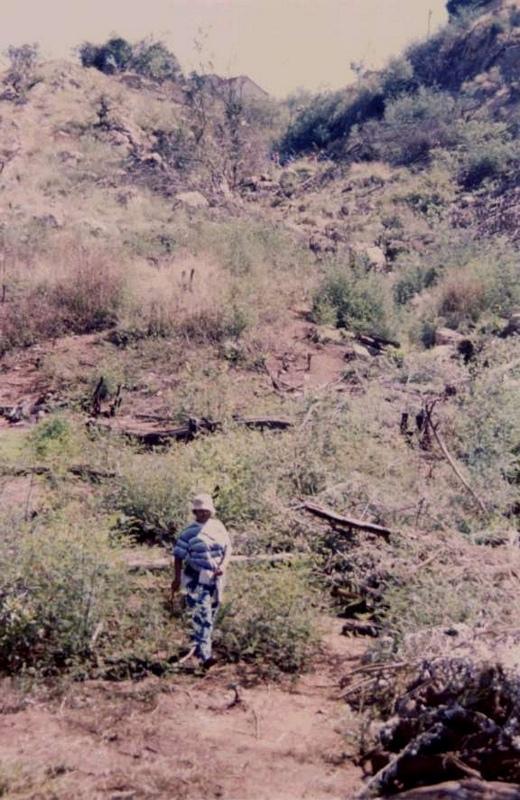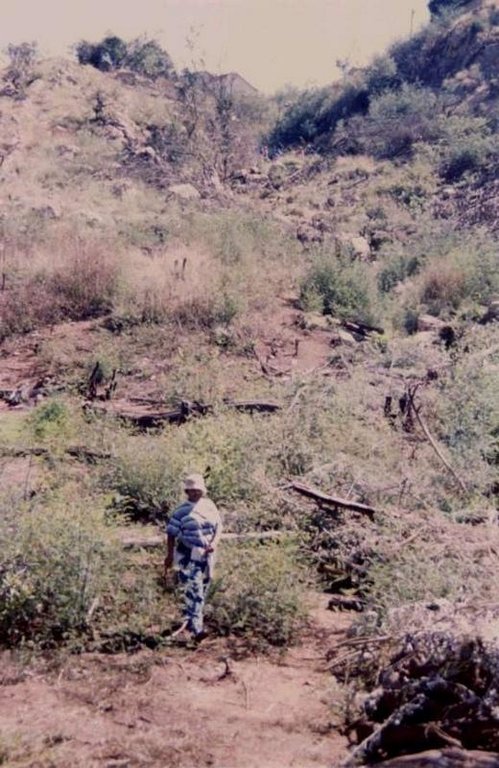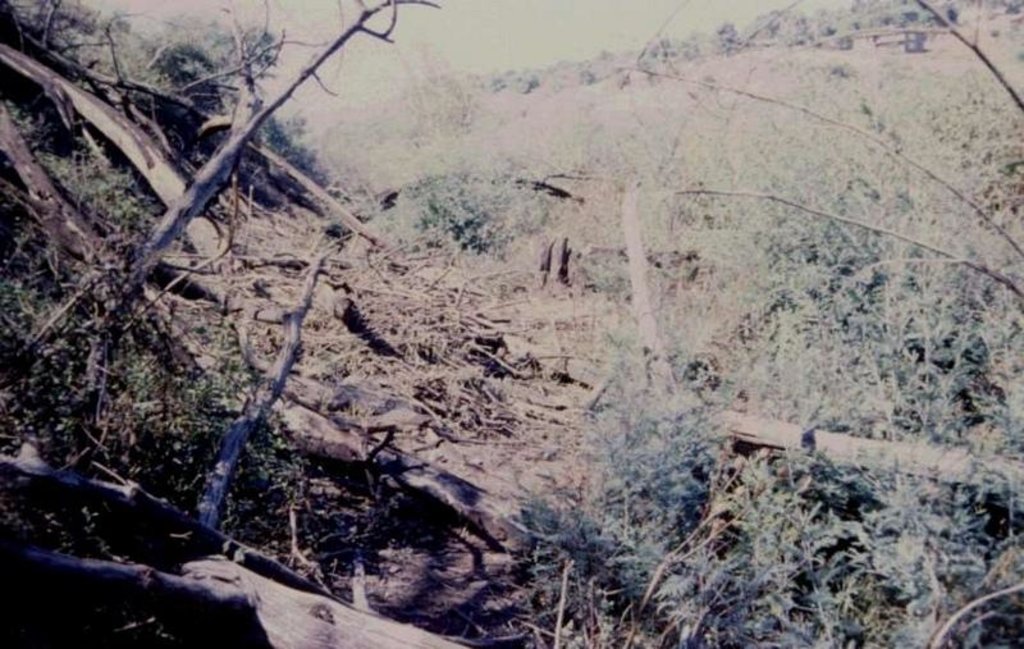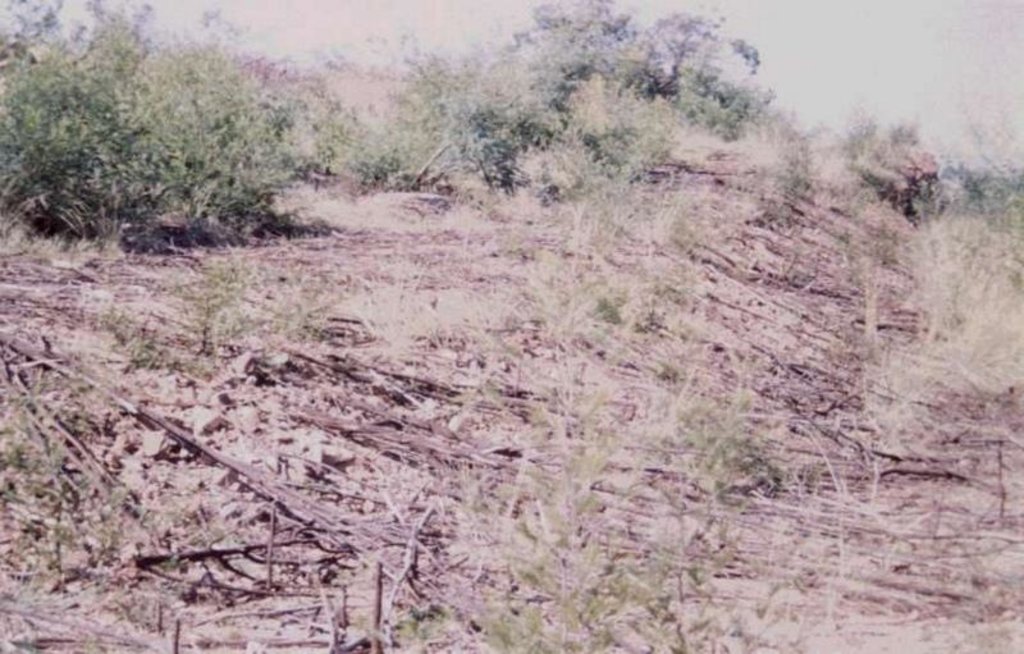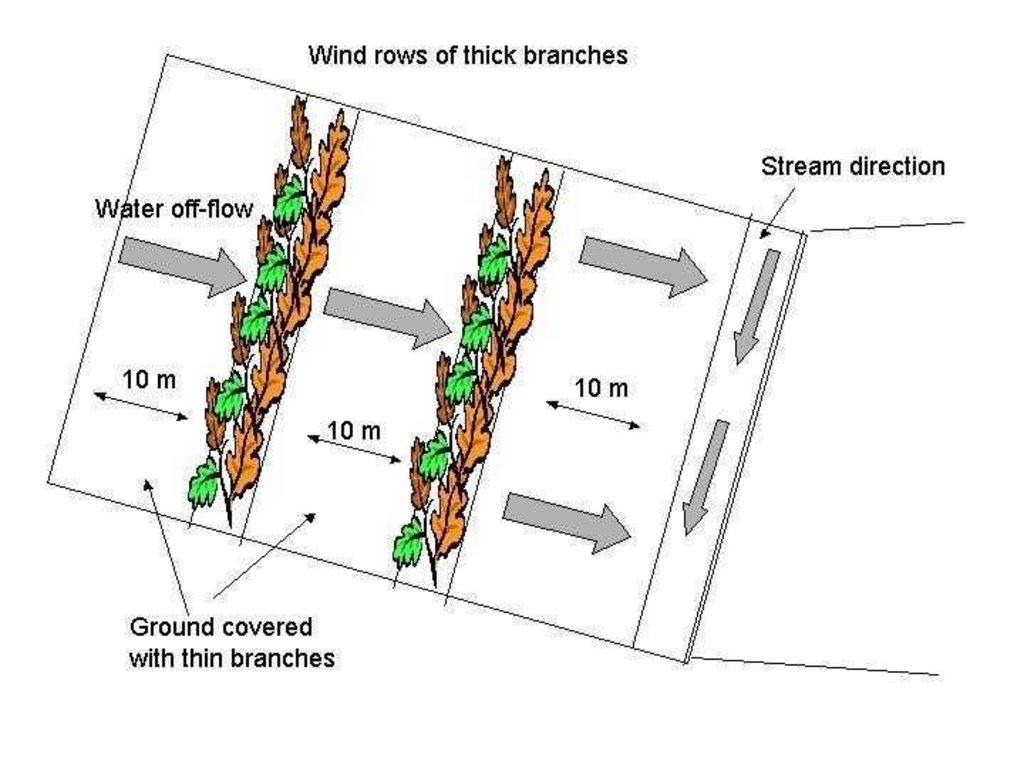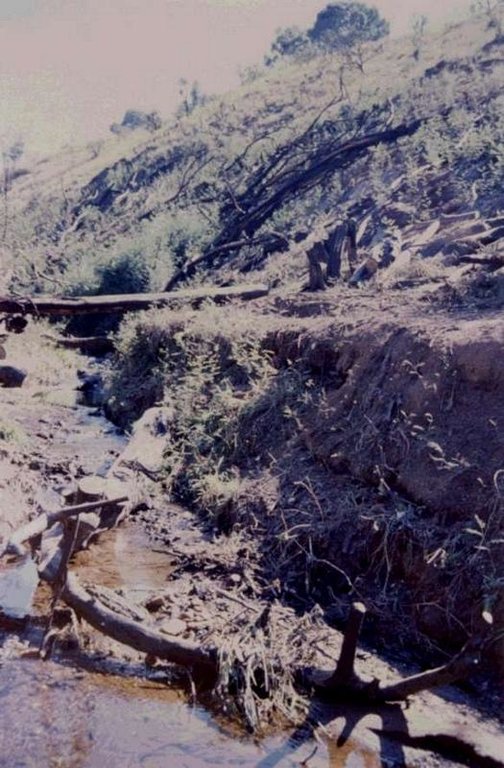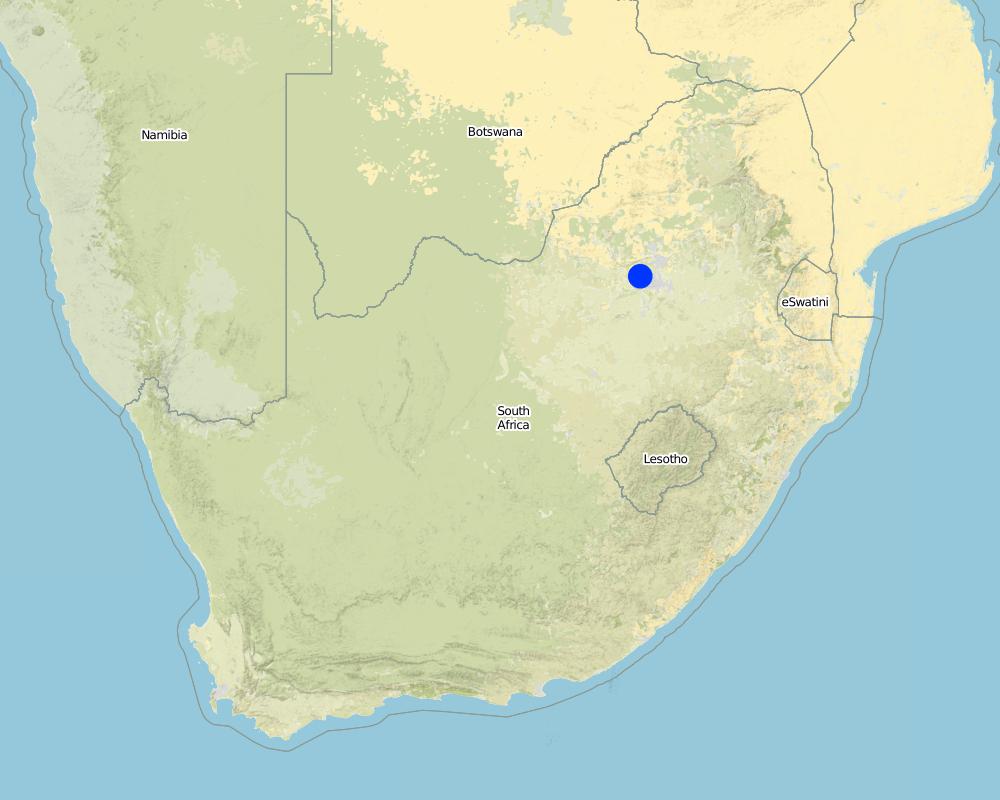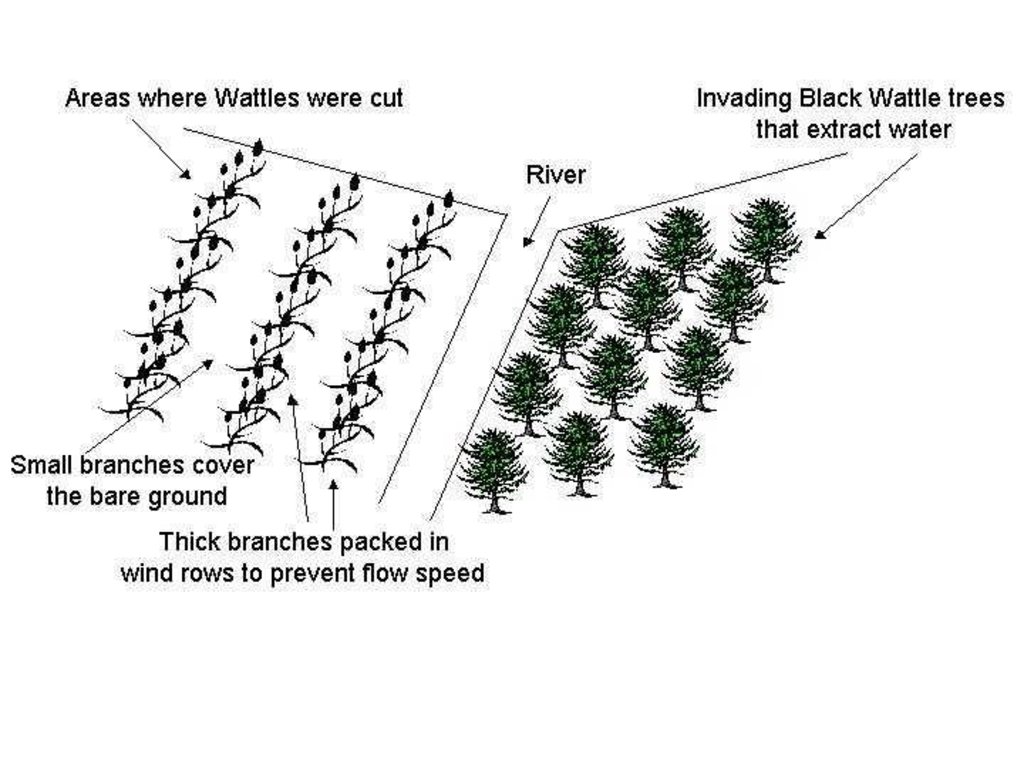Combating of invader plants and bush packing [África do Sul]
- Criação:
- Atualização:
- Compilador/a: Unknown User
- Editor: –
- Revisores: David Streiff, Alexandra Gavilano
technologies_1373 - África do Sul
Veja as seções
Expandir tudo Recolher tudo1. Informação geral
1.2 Detalhes do contato das pessoas capacitadas e instituições envolvidas na avaliação e documentação da tecnologia
Pessoa(s) capacitada(s)
Especialista em GST:
Meyer Schalk
Gauteng Department of Agriculture
África do Sul
Nome da(s) instituição(ões) que facilitou(ram) a documentação/ avaliação da Tecnologia (se relevante)
Gauteng Department of Agriculture and Rural Develo (Gauteng Department of Agriculture and Rural Develo) - África do Sul1.3 Condições em relação ao uso da informação documentada através de WOCAT
O/a compilador/a e a(s) pessoa(s) capacitada(s) aceitam as condições relativas ao uso de dados documentados através da WOCAT:
Sim
1.5 Referência ao(s) questionário(s) sobre abordagens GST (documentado(s) usando WOCAT)
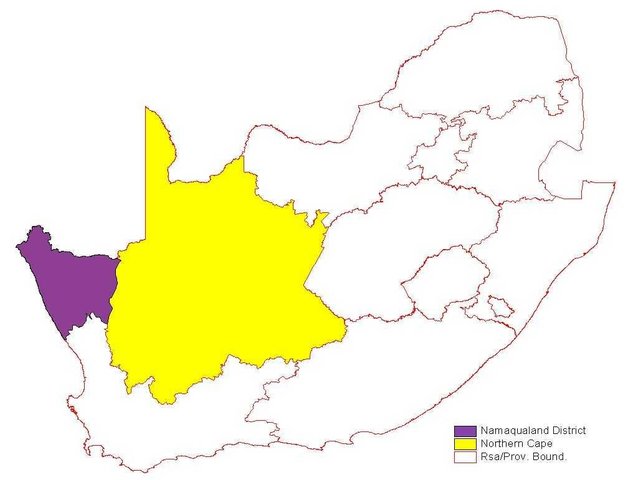
Awareness raising [África do Sul]
To make the people aware of veld degradation, rehabilitation & the participation of the people
- Compilador/a: Belly Mpoko Malatji
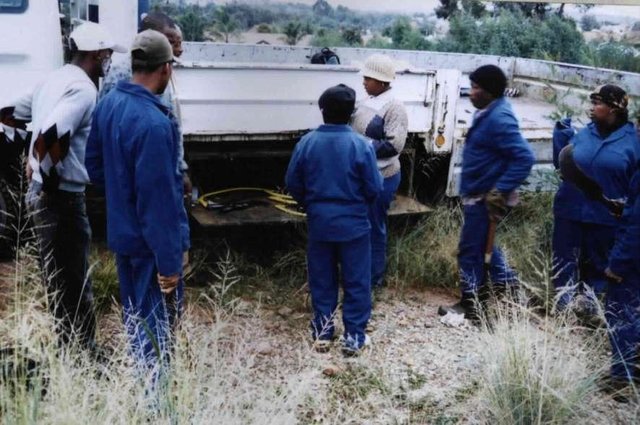
Technical and scientific support & Job creation in … [África do Sul]
To make the community aware of precious resources like water and the preservation of it, the control of alien encroachment, creation of job opportunities and the training of the undeveloped communities.
- Compilador/a: Philippe Zahner
2. Descrição da tecnologia de GST
2.1 Descrição curta da tecnologia
Definição da tecnologia:
The combating of Invaders to preserve water resources & the rehabilitation of the bare ground by means of brush packing to prevent soil erosion.
2.2 Descrição detalhada da tecnologia
Descrição:
The technology is applied in areas under the 'Working for Water' projects that are run by the National Department of Water Affairs in South Africa, in the fight to combat invaders exhausting our valuable water resources. Catchment areas are fields that are infected by invader species on riverbanks, and catchment areas that extract enormous amounts of water out of the system. The trees (Black wattle - Acacia meansii) are cut or ring barked. After the trees are felled, large areas of bare ground are exposed. In order to prevent soil erosion until the natural succession processes are completed and the area is in equilibrium with the rest of the environment, soil needs to be stabilised and sometimes also rehabilitated.
These exposed areas must first be treated with a follow-up to prevent the coppice, re-growth and seedlings from growing again. Sometimes in agricultural grazing areas, the bare areas are re-seeded with natural climax grasses, and in urban areas left to be stabilised by successional species, or pioneers and aveads etc. The small branches of the felled trees are packed on bare areas, after the re-seeding to stop the topsoil from eroding. This reduces the off-flow and flow speed of the rainwater, lowering the raindrop impact, increasing the moist regime and preventing wind erosion. The thick stumps are either used for firewood or for the charcoal industry, as well as packed in windrows horizontal with stream flow.
2.3 Fotos da tecnologia
2.5 País/região/locais onde a tecnologia foi aplicada e que estão cobertos nesta avaliação
País:
África do Sul
Região/Estado/Província:
Gauteng
Especificação adicional de localização:
Gauteng
Especifique a difusão da tecnologia:
- Uniformemente difundida numa área
Se a Tecnologia estiver uniformemente distribuída por uma área, especifique a área coberta (em km2):
2,0
Se a área precisa não for conhecida, indicar a área aproximada coberta:
- 1-10 km2
Comentários:
Total area covered by the SLM Technology is 2 km2.
2 Sites at Krugersdorp, one along a public rood where no development is done yet & the second at Kenmeare Kloof that divided two residential areas. Elandsfontein is bits & pieces that scatters over several farms.
Map
×2.6 Data da implementação
Caso o ano exato seja desconhecido, indique a data aproximada:
- menos de 10 anos atrás (recentemente)
2.7 Introdução da tecnologia
Especifique como a tecnologia foi introduzida:
- através de projetos/intervenções externas
Comentários (tipos de projeto, etc.):
The technology was experimented by the University of Potchefstroom and also applied at other typical Working for Water projects in the country and technical advise by experts of Water Affairs.
3. Classificação da tecnologia de GST
3.1 Principal/principais finalidade(s) da tecnologia
- Reduz, previne, recupera a degradação do solo
3.2 Tipo(s) atualizado(s) de uso da terra onde a tecnologia foi aplicada

Pastagem
Pastagem extensiva:
- Fazenda pecuária
- cattle
Comentários:
Main animal species and products: Not many cattle, people still poor - average
Major land use problems (compiler’s opinion): Tremendous bush encroachment by wattle species or other similar invaders like blue gum trees, the area has no further land use after the bush encroachment.
Major land use problems (land users’ perception): The problem is similar, no land use in encroached areas, the trees are to close and no grasses grow underneath for cattle to feed on, and the bush provided shelter for criminal activities.
Constraints of settlement / urban: Preventing of fires in the dry trees
Constraints of recreation: Preventing of fires in dry trees/area
Number of growing seasons per year: 1
Longest growing period in days: 210; Longest growing period from month to month: Oct - Mar
3.5 Grupo de GST ao qual pertence a tecnologia
- Solo/cobertura vegetal melhorada
3.6 Medidas de GST contendo a tecnologia

Medidas vegetativas
- V4: Substituição ou retirada de espécies exóticas/invasivas

Medidas de gestão
- M2: Mudança de gestão/nível de intensidade
Comentários:
Secondary measures: management measures
3.7 Principais tipos de degradação da terra abordados pela tecnologia

Erosão do solo pela água
- Wt: Perda do solo superficial/erosão de superfície
- Wg: Erosão por ravinas/ravinamento

Deteriorização química do solo
- Cn: declínio de fertilidade e teor reduzido de matéria orgânica (não causado pela erosão)

Degradação da água
- Ha: aridificação
Comentários:
Secondary types of degradation addressed: Wg: gully erosion / gullying, Cn: fertility decline and reduced organic matter content, Ha: aridification
3.8 Redução, prevenção ou recuperação da degradação do solo
Especifique o objetivo da tecnologia em relação a degradação da terra:
- Recuperar/reabilitar solo severamente degradado
Comentários:
Secondary goals: prevention of land degradation, mitigation / reduction of land degradation
4. Especificações técnicas, implementação de atividades, entradas e custos
4.1 Desenho técnico da tecnologia
Especificações técnicas (relacionada ao desenho técnico):
Clearing of alien plants
Working for Water
Gauteng
Technical knowledge required for field staff / advisors: high
Technical knowledge required for land users: moderate
Main technical functions: control of raindrop splash, control of dispersed runoff: retain / trap, control of dispersed runoff: impede / retard, control of concentrated runoff: retain / trap, control of concentrated runoff: impede / retard, control of concentrated runoff: drain / divert, reduction of slope length, improvement of ground cover, increase of surface roughness, increase in organic matter, increase of infiltration, increase / maintain water stored in soil, water harvesting / increase water supply, water spreading, sediment retention / trapping, sediment harvesting, reduction in wind speed, increase in soil fertility
Secondary technical functions: reduction of slope angle, improvement of topsoil structure (compaction)
Change of land use practices / intensity level: No grazing for first 3 years after reseeding
Control / change of species composition: Follow-up - eradication and control of regrowth
Autor:
Schalk Meyer
4.2 Informação geral em relação ao cálculo de entradas e custos
Outro/moeda nacional (especifique):
Rand
Se for relevante, indique a taxa de câmbio do USD para moeda local (por exemplo, 1 USD = 79,9 Real): 1 USD =:
6,0
Indique a média salarial da mão-de-obra contratada por dia:
5.00
4.3 Atividades de implantação
| Atividade | Periodicidade (estação do ano) | |
|---|---|---|
| 1. | Cutting of trees | Summer |
| 2. | Packing of branches | Before winter (wind) & spring (rain) |
4.4 Custos e entradas necessárias para a implantação
| Especifique a entrada | Unidade | Quantidade | Custos por unidade | Custos totais por entrada | % dos custos arcados pelos usuários da terra | |
|---|---|---|---|---|---|---|
| Mão-de-obra | Cutting of trees and packing branches | persons/day/ha | 500,0 | 30,0 | 15000,0 | 100,0 |
| Equipamento | tools | ha | 1,0 | 500,0 | 500,0 | 100,0 |
| Material vegetal | Seeds | ha | 1,0 | 125000,0 | 125000,0 | 100,0 |
| Custos totais para a implantação da tecnologia | 140500,0 | |||||
| Custos totais para o estabelecimento da Tecnologia em USD | 23416,67 | |||||
Comentários:
Duration of establishment phase: 0 month(s)
4.5 Atividades recorrentes/manutenção
| Atividade | Periodicidade/frequência | |
|---|---|---|
| 1. | Where reseeding took place the grazing must be maintained | 3 years after planting / 3 years |
4.6 Custos e entradas necessárias pata a manutenção/atividades recorrentes (por ano)
Comentários:
The total implementation of the technique: Costs of chemicals & tools, labour for the whole project, the cutting of the regrowth and the treatment of it (follow-up) and the packing of the branches.
4.7 Fatores mais importantes que afetam os custos
Descreva os fatores mais determinantes que afetam os custos:
Labour: The work team of 25 people is very expensive/costly. Chemicals for the invader eradication treatment is very expensive.
5. Ambiente natural e humano
5.1 Clima
Precipitação pluviométrica anual
- <250 mm
- 251-500 mm
- 501-750 mm
- 751-1.000 mm
- 1.001-1.500 mm
- 1.501-2.000 mm
- 2.001-3.000 mm
- 3.001-4.000 mm
- > 4.000 mm
Especifique a média pluviométrica anual em mm (se conhecida):
600,00
Zona agroclimática
- Subúmido
- Semiárido
5.2 Topografia
Declividade média:
- Plano (0-2%)
- Suave ondulado (3-5%)
- Ondulado (6-10%)
- Moderadamente ondulado (11-15%)
- Forte ondulado (16-30%)
- Montanhoso (31-60%)
- Escarpado (>60%)
Formas de relevo:
- Planalto/planície
- Cumes
- Encosta de serra
- Encosta de morro
- Sopés
- Fundos de vale
Zona de altitude:
- 0-100 m s.n.m.
- 101-500 m s.n.m.
- 501-1.000 m s.n.m.
- 1.001-1.500 m s.n.m.
- 1.501-2.000 m s.n.m.
- 2.001-2.500 m s.n.m.
- 2.501-3.000 m s.n.m.
- 3.001-4.000 m s.n.m.
- > 4.000 m s.n.m.
Comentários e outras especificações sobre a topografia:
Slopes on average: Also rolling
Landforms: Hill slopes at Krugersdorp
Altitudinal zone: 1542 m a.s.l.
5.3 Solos
Profundidade do solo em média:
- Muito raso (0-20 cm)
- Raso (21-50 cm)
- Moderadamente profundo (51-80 cm)
- Profundo (81-120 cm)
- Muito profundo (>120 cm)
Textura do solo (solo superficial):
- Grosso/fino (arenoso)
- Médio (limoso, siltoso)
Matéria orgânica do solo superficial:
- Baixo (<1%)
Caso disponível anexe a descrição completa do solo ou especifique as informações disponíveis, p. ex. tipo de solo, PH/acidez do solo, nitrogênio, capacidade de troca catiônica, salinidade, etc.
Soil depth on average : Very shallow at hillside at Krugersdorp more predominantly and shallow at more farm soils at the plains of Elandsfontein.
Soil fertility is medium in plains and low in hillsides
Topsoil organic matter: Not very fertile, no grasses to enhanced biomass
Soil drainage / infiltration is medium for the soil of plains of Elandfontein (not so compacted - better drainage) and poor for Krugersdorp (hillside highly compacted)
Soil water storage capacity is medium for Elandsfontein (less compacted) and low for Krugersdorp (more compacted)
5.6 Características dos usuários da terra que utilizam a tecnologia
Orientação de mercado do sistema de produção:
- Subsistência (autoabastecimento)
Rendimento não agrícola:
- 10-50% de toda renda
Nível relativo de riqueza:
- Pobre
- Média
Indique outras características relevantes dos usuários da terra:
Population density: 50-100 persons/km2
Annual population growth: < 0.5%
40% of the land users are average wealthy and own 30% of the land (Elandsfontein, upcoming farmer).
60% of the land users are poor and own 70% of the land (Communities that is not fully commercialized).
Off-farm income specification: Family members are working in the city, to provide for the family (the children and brothers etc.)
Market orientation of production system: Subsistence (self-supply) for Elandsfontein: workers that are living on the farm
5.7 Área média de terrenos utilizados pelos usuários de terrenos que aplicam a Tecnologia
- < 0,5 ha
- 0,5-1 ha
- 1-2 ha
- 2-5 ha
- 5-15 ha
- 15-50 ha
- 50-100 ha
- 100-500 ha
- 500-1.000 ha
- 1.000-10.000 ha
- > 10.000 ha
5.8 Propriedade de terra, direitos de uso da terra e de uso da água
Propriedade da terra:
- Comunitário/rural
- Indivíduo, não intitulado
Direitos do uso da terra:
- Comunitário (organizado)
- Indivíduo
6. Impactos e declarações finais
6.1 Impactos no local mostrados pela tecnologia
Impactos socioeconômicos
Produção
Produção de forragens
Comentários/especificar:
Where reseeding was done the bare soil will be replaced with grasses
Qualidade da forragem
Comentários/especificar:
Where reseeding was done the bare soil will be replaced with grasses
Renda e custos
Rendimento agrícola
Comentários/especificar:
Better grazing for cattle and selling of fire wood
Diversidade de fontes de rendimento
Comentários/especificar:
Selling of wood for fire wood & charcoal to charcoal industry
Impactos socioculturais
Instituições comunitárias
Comentários/especificar:
Training and job creation
Conhecimento de GST/ degradação da terra
Comentários/especificar:
Better technologies and experience
Impactos ecológicos
Ciclo hídrico/escoamento
Escoamento superficial
Quantidade anterior à GST:
90
Quantidade posterior à GST:
30
Drenagem de excesso de água
Solo
Umidade do solo
Cobertura do solo
Perda de solo
Clima e redução de riscos de desastre
Velocidade do vento
Outros impactos ecológicos
soil fertility
biodiversity
conserve water resource while reducing invader bush
6.2 Impactos externos mostrados pela tecnologia
Caudal confiável e estável em período seco
Comentários/especificar:
No Wattle's to extract water, reduced runoff
Sedimentação a jusante
Sedimentos transportados pelo vento
Comentários/especificar:
Soil is stabilized
6.4 Análise do custo-benefício
Como os benefícios se comparam aos custos de implantação (do ponto de vista dos usuários da terra)?
Retornos a curto prazo:
muito positivo
Retornos a longo prazo:
muito positivo
Como os benefícios se comparam aos custos recorrentes/de manutenção(do ponto de vista dos usuários da terra)?
Retornos a curto prazo:
levemente positivo
Retornos a longo prazo:
levemente positivo
6.5 Adoção da tecnologia
Comentários:
There is no trend towards spontaneous adoption of the Technology
6.7 Pontos fortes/vantagens/oportunidades da tecnologia
| Pontos fortes/vantagens/oportunidades na visão do usuário da terra |
|---|
|
Elandsfontein: prevent soil loss How can they be sustained / enhanced? Improve farm soils - control overgrazing |
|
Elandsfontein: Improve grazing capacity How can they be sustained / enhanced? Rotational grazing and rest for first 3 years after rehabilitation |
| Pontos fortes/vantagens/oportunidades na visão do/a compilador/a ou de outra pessoa capacitada |
|---|
|
Prevent soil loss How can they be sustained / enhanced? Packing of branches correctly and maintained - preventing of veld fires (wood from burning) |
|
Reseeding of perennial grasses that enhanced grazing capacity and biodiversity How can they be sustained / enhanced? Correct seed mix & seeding method; preventing from grazing and veld fires |
|
Conserve water resource How can they be sustained / enhanced? Eradication and control of invaders |
6.8 Pontos fracos, desvantagens/riscos da tecnologia e formas de superá-los
| Pontos fracos/vantagens/riscos na visão do/a compilador/a ou de outra pessoa capacitada | Como eles podem ser superados? |
|---|---|
| Labour intensive | No recommendations |
| Time consuming | No recommendations |
| Expensive | No recommendations |
7. Referências e links
7.1 Métodos/fontes de informação
7.2 Referências às publicações disponíveis
Título, autor, ano, ISBN:
Business plan and work reports from government officers / officials & NGO's like universities
Disponível de onde? Custos?
Gauteng Department of Agriculture
Título, autor, ano, ISBN:
NGO's and Universities
Disponível de onde? Custos?
Gauteng Department of Agriculture
Links e módulos
Expandir tudo Recolher tudoLinks

Awareness raising [África do Sul]
To make the people aware of veld degradation, rehabilitation & the participation of the people
- Compilador/a: Belly Mpoko Malatji

Technical and scientific support & Job creation in … [África do Sul]
To make the community aware of precious resources like water and the preservation of it, the control of alien encroachment, creation of job opportunities and the training of the undeveloped communities.
- Compilador/a: Philippe Zahner
Módulos
Não há módulos


